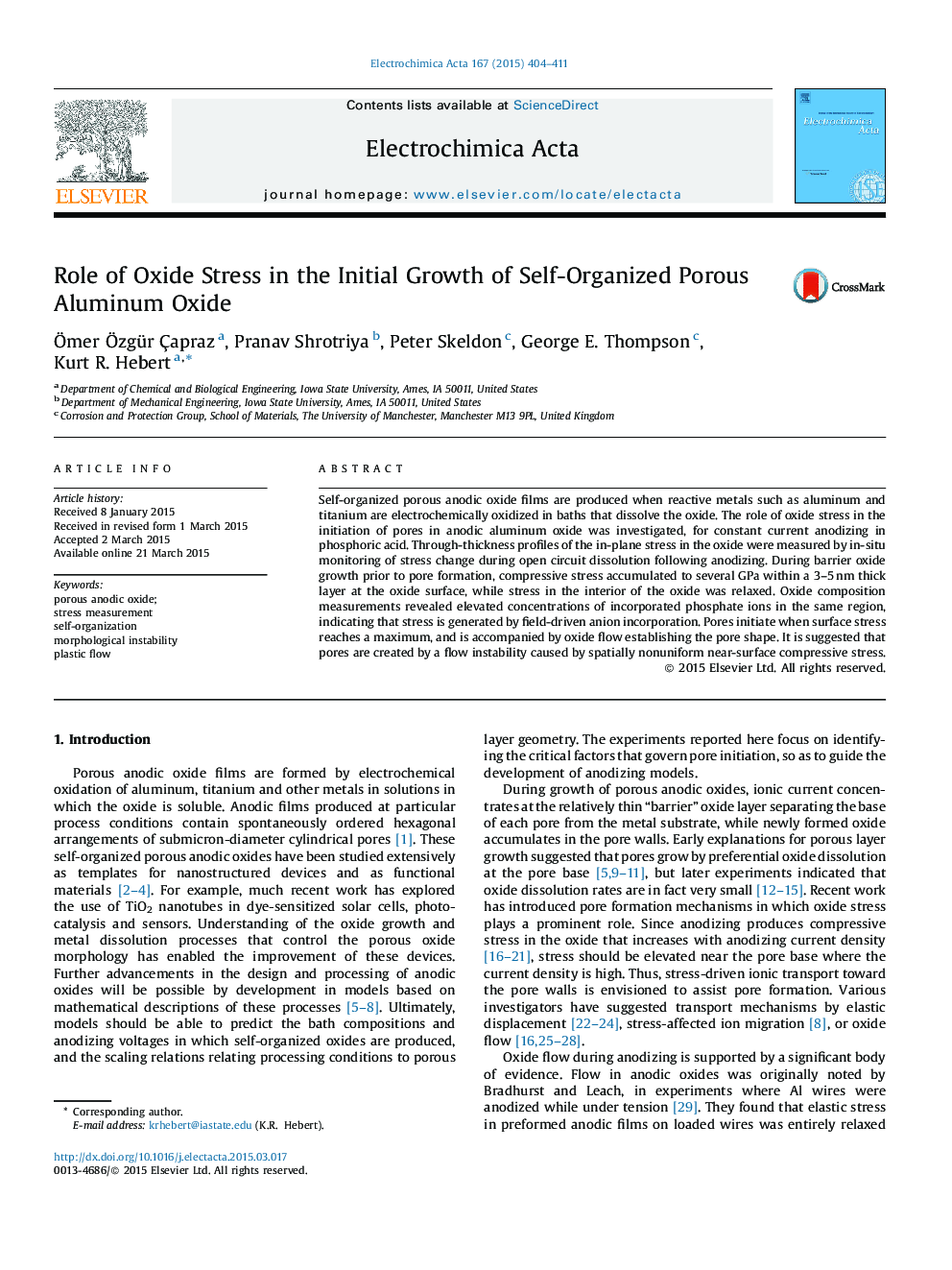| Article ID | Journal | Published Year | Pages | File Type |
|---|---|---|---|---|
| 184368 | Electrochimica Acta | 2015 | 8 Pages |
Self-organized porous anodic oxide films are produced when reactive metals such as aluminum and titanium are electrochemically oxidized in baths that dissolve the oxide. The role of oxide stress in the initiation of pores in anodic aluminum oxide was investigated, for constant current anodizing in phosphoric acid. Through-thickness profiles of the in-plane stress in the oxide were measured by in-situ monitoring of stress change during open circuit dissolution following anodizing. During barrier oxide growth prior to pore formation, compressive stress accumulated to several GPa within a 3–5 nm thick layer at the oxide surface, while stress in the interior of the oxide was relaxed. Oxide composition measurements revealed elevated concentrations of incorporated phosphate ions in the same region, indicating that stress is generated by field-driven anion incorporation. Pores initiate when surface stress reaches a maximum, and is accompanied by oxide flow establishing the pore shape. It is suggested that pores are created by a flow instability caused by spatially nonuniform near-surface compressive stress.
